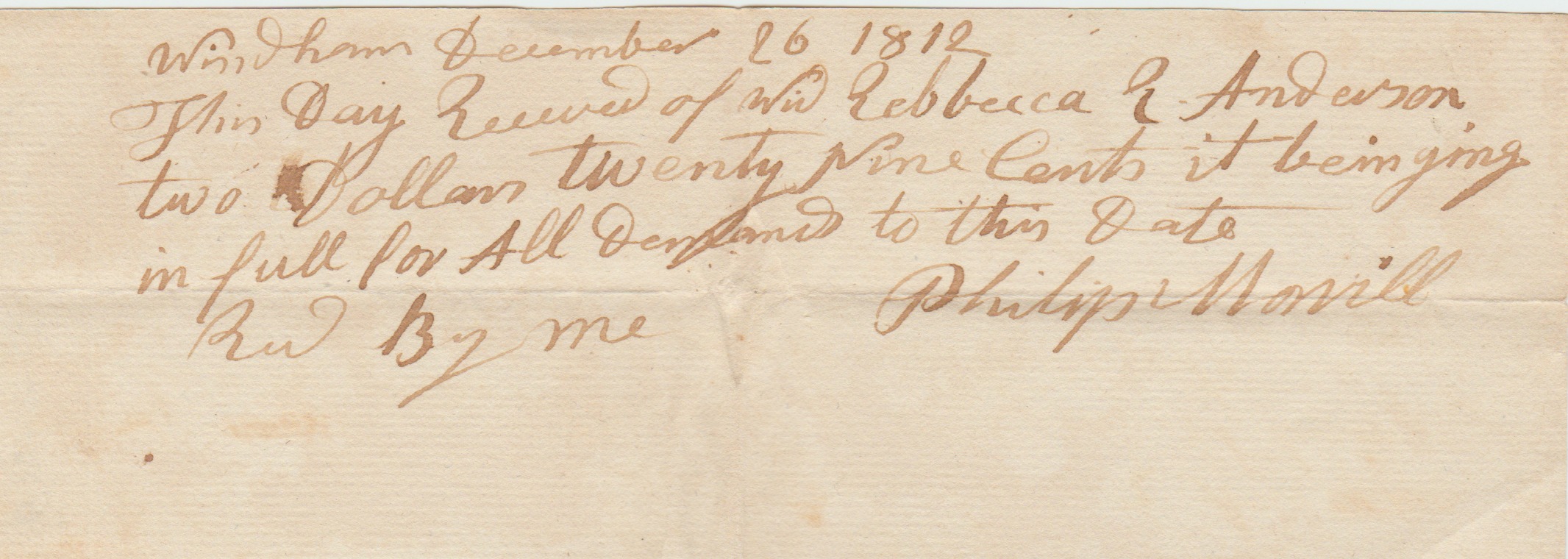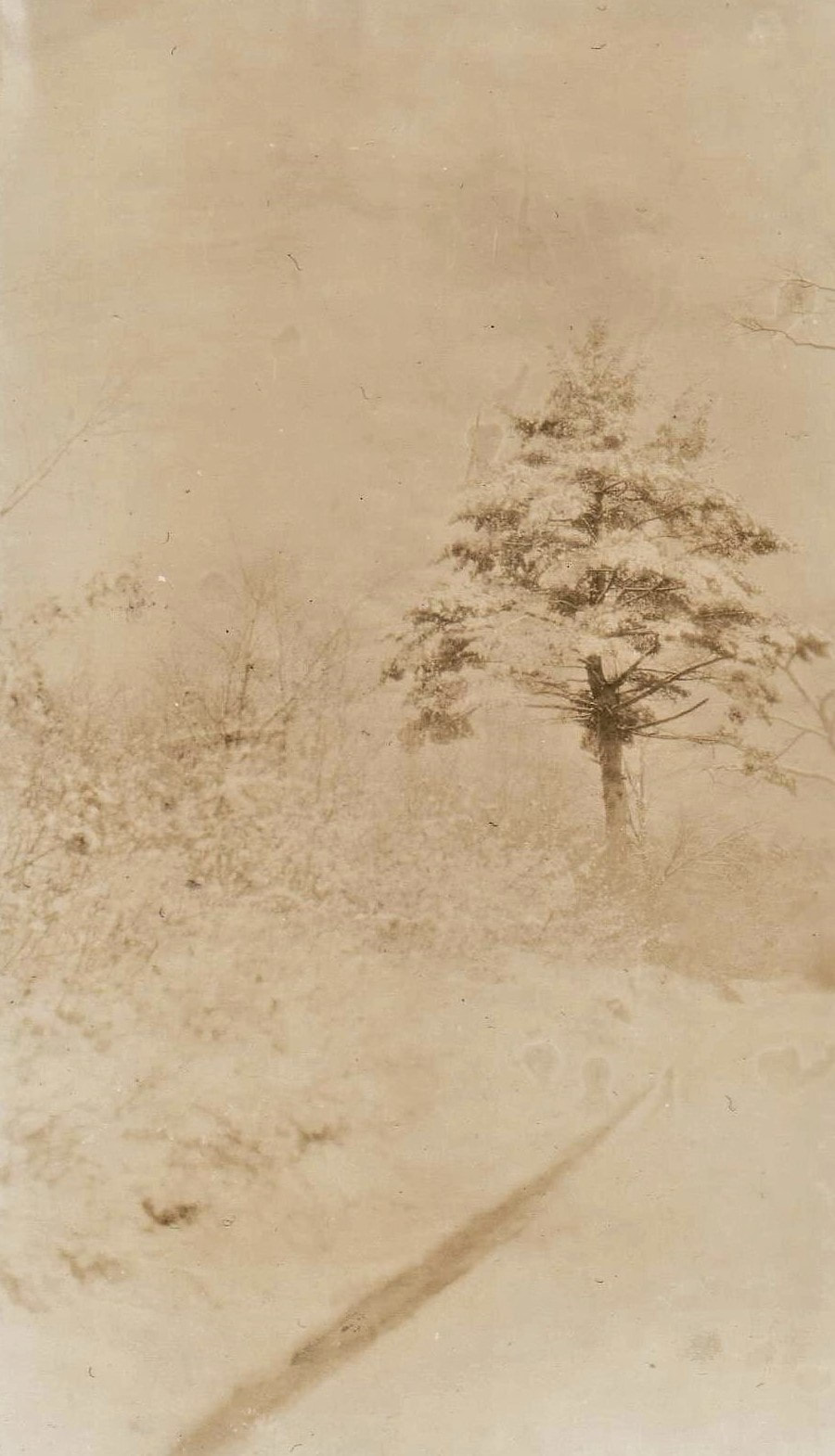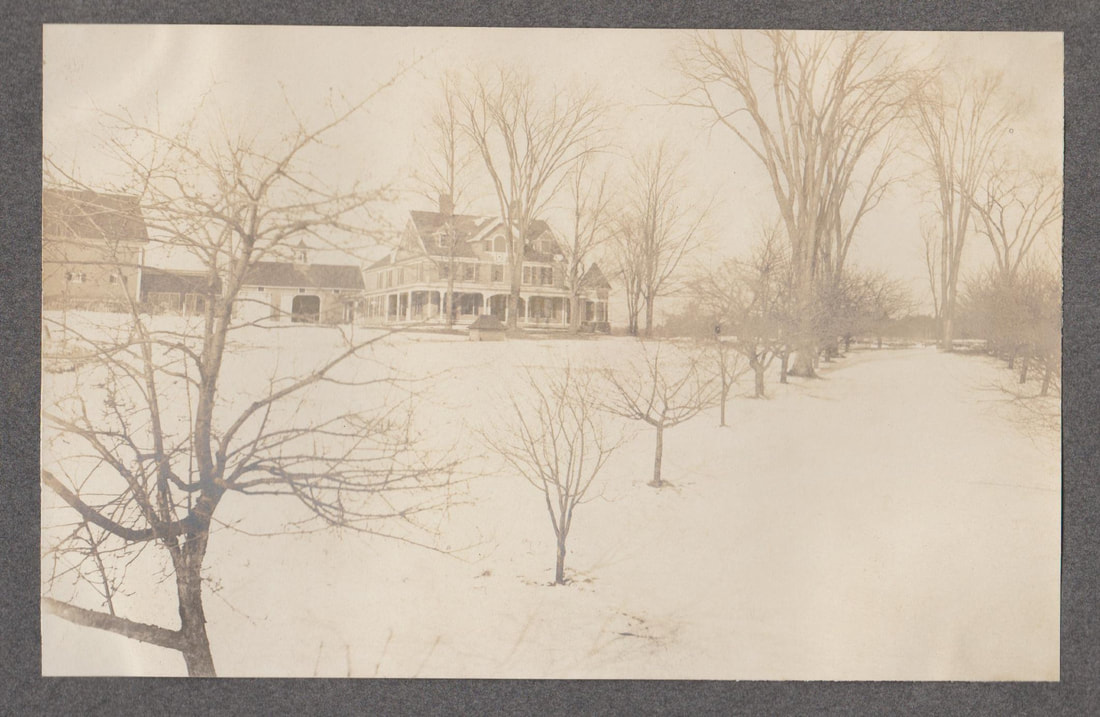Philip Morrill moved to Windham from Pelham in 1805 after purchasing a property from William Davidson and William Shed, both Windham residents, for twenty dollars. His occupation at the time was listed as a tanner, working with leather. For his twenty dollars, Morrill became the owner of one acre of land near Beaver Brook. Two years after relocating to Windham, Morrill and his wife Sally became the proud parents of their first son, Alexis; Alexis’ birth on June 2, 1807 is the first birth in Morrill’s family recorded in Windham.
In August of 1808 Philip purchased two acres of land in West Windham, near Beaver Brook, from William Davidson for the sum of thirty dollars. This land was adjacent to the property already owned by Morrill, and he had now tripled his acreage for just thirty dollars. As neither this property, nor the previous property, had included any buildings, we can surmise Philip had built a home upon the first tract of land before his son had been born. Philip must have fancied himself being a success with real estate as he purchased more land in Windham in 1809. In March of 1809, Philip purchased eight acres of land from William McCoy, although it is not clear if this new tract of land actually bordered Philip’s homestead, or if he was simply expanding his acreage in town. Morrill paid sixty dollars for the land, amounting to just $7.50 per acre, a bargain when compared with the $10 - $15 per acre he had previously paid for land. Although Philip purchased his first tracts of land in Windham to build a home, he seems to have been quite a real estate investor. In 1811 Morrill sold a tract of land in West Windham to Josiah Butler for over $400, a handsome profit.
Flush with cash from his sale of land to Josiah Butler, in 1813 Philip purchased a property, which included two individual lots, in Windham for the princely sum of $395; this land was sold to him by Josiah Butler. It is in the deed for this property that the first mention of Morrill’s house can be found. For $395 Morrill became the owner of one eight acre lot near his homestead, as well as a likely larger tract for which the acreage is not provided in the deed. Shortly after his large land purchase, Morrill continued purchasing land in West Windham, paying William McCoy $54 for just two acres in that part of town. In August of 1813, Philip made his largest real estate transaction yet in Windham. He sold Solomon Hardy four acres of land in West Windham for a staggering $500.
For Philip Morrill January of 1814 must have been quite a month. Just a week after New Year’s Day of 1814 Morrill purchased approximately ten acres of land from Robert and Betsey Simpson. Unfortunately, Sally Morrill passed away sometime before 1814. Although the birth of her son was recorded in the town records, her death seems to have been overlooked, or at least Morrison could not find the information. However, by 1814 Philip had remarried, and his second wife Mehitable gave birth to the couple’s second son, Lorenzo, on January 27, 1814. Within a week of Lorenzo’s birth Philip was back to dealing in Windham real estate, purchasing a tract of land in the vicinity of Beaver Brook that at the time was commonly called “Commins field.” Morrill spent $170 for another tract of West Windham land just two months later.
In December of 1814 Philip sold eight acres of land near his home for just over thirty-seven dollars. He continued selling real estate in 1814 and 1815, selling a few hundred dollars worth of land in Windham; Philip also sold a few hundred dollar property in Nottingham. In 1817 Morrill sold off nearly one thousand dollars worth of property in West Windham; the two transactions mark the last time Morrill is recorded as living in Windham.


